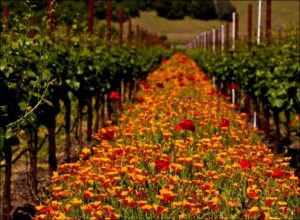A cover crop is planted when the primary crop isn’t grown. This practice covers the soil to reduce weeds, save water, increase biodiversity, and improve soil health. Native and non-native grasses, legumes, and forbs are commonly used, and can be selected based on your conservation goals, cropping system, resources, and geographic region.
Do This If You Have
- Seasonally bare soil
- Soil erosion from wind or water
- Poor soil health, soil fertility, and organic matter content
- High weed pressure
- Heavy reliance on external nutrient inputs
- Nutrient and sediment pollution in surface and/or ground water
- Poor air quality from particulate matter such as dust
- Lack of beneficial soil (ex., earthworms) and aboveground organisms (ex., pollinators)

